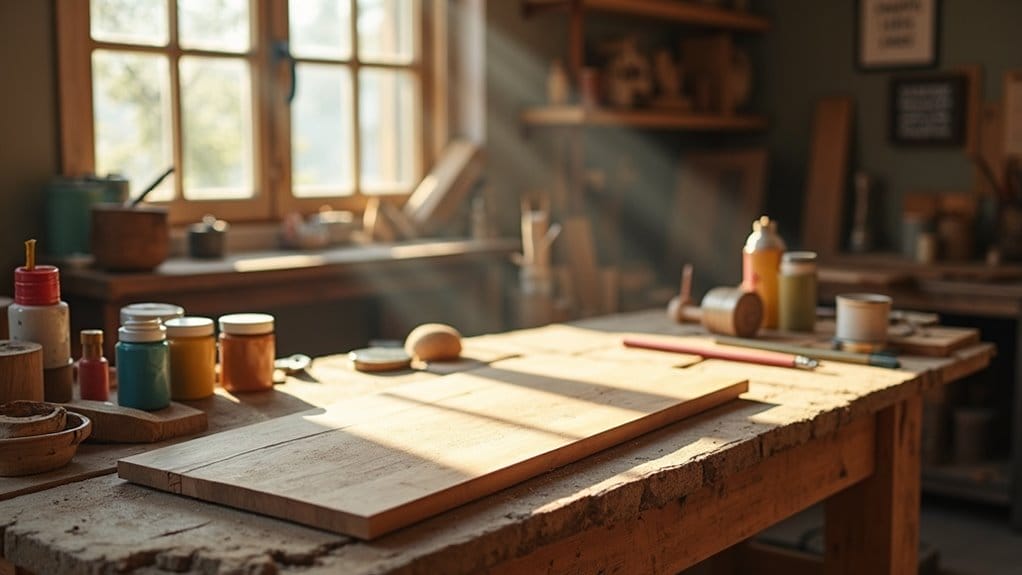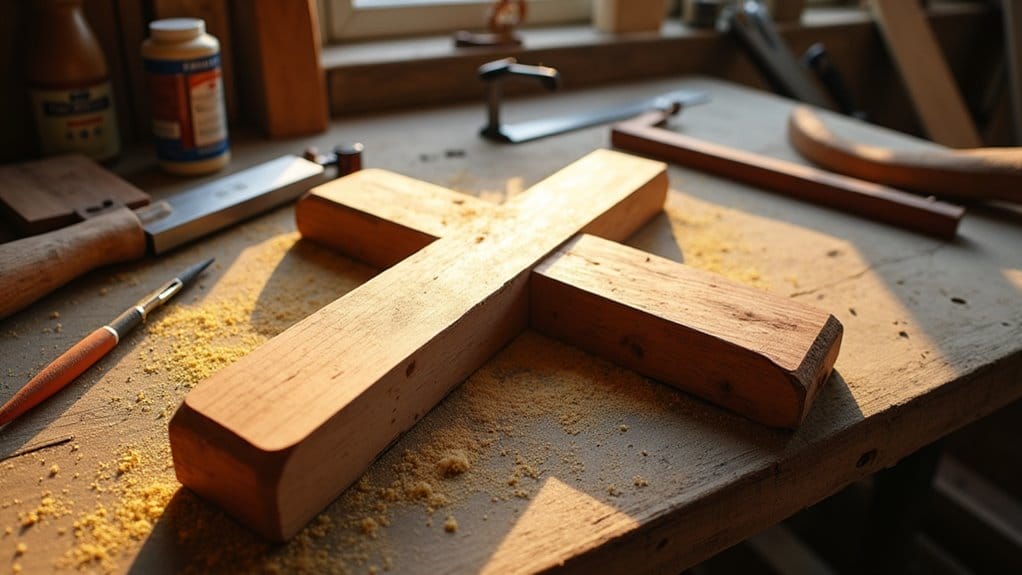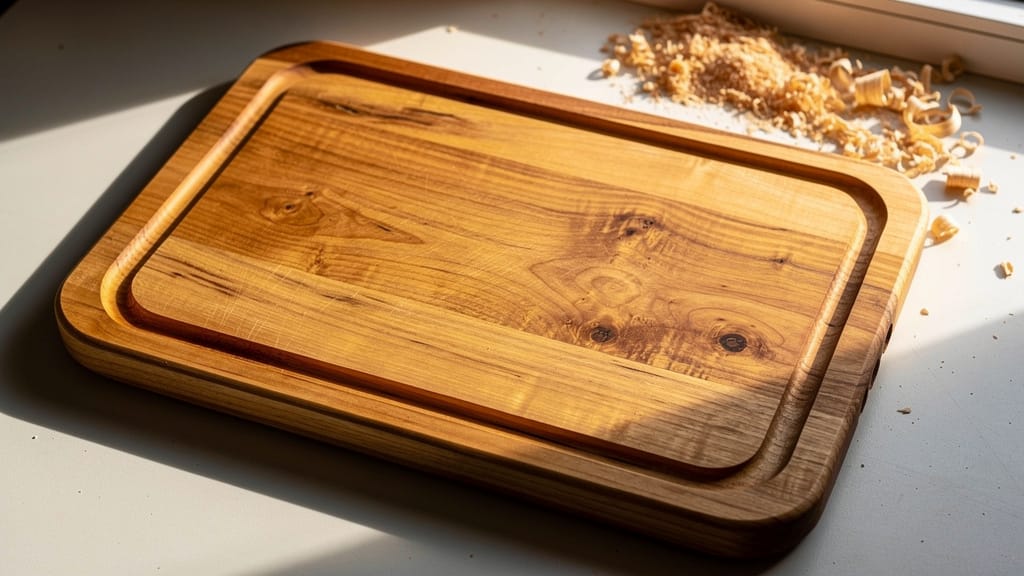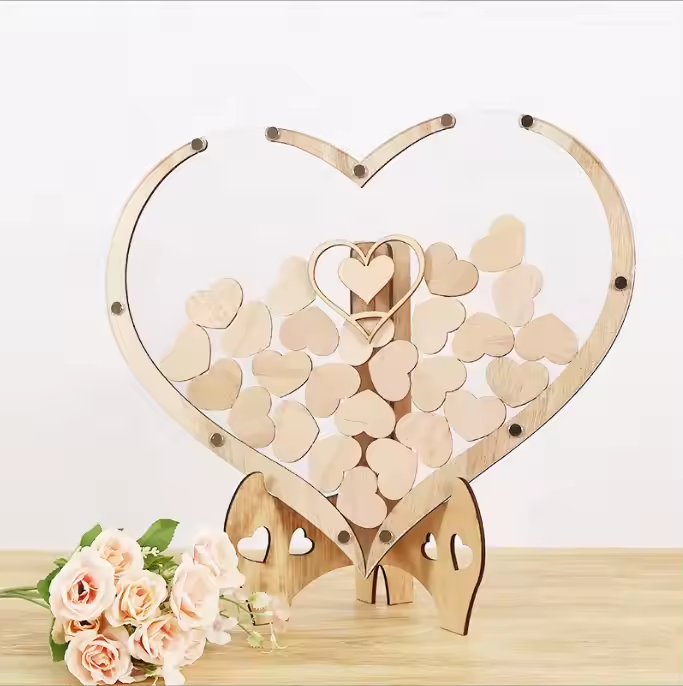When you ask what wood to use for outdoor signs, you want something that lasts and looks great. The best wood to use includes cedar, redwood, white oak, marine plywood, and teak. These stand out for their weather resistance and durability.
| Wood Type | Durability / Lifespan | Janka Hardness | Key Durability Features |
|---|---|---|---|
| Teak | 75 years or more with proper care | ~2,330 | Highly weather-resistant, natural oils repel water, pests, decay; used in shipbuilding |
| Redwood | 10 to 30 years with maintenance | N/A | Resistant to rot, decay, moisture, insects |
| Cedar | Lasts for decades with maintenance | N/A | Naturally repels moisture, rot, decay, and insects |
| White Oak | N/A | N/A | Known for durability and outdoor suitability |
| Marine Plywood | N/A | N/A | Designed for outdoor use, resistant to moisture |
All these woods hold up well on outdoor wooden signs. You get a natural look and strength that help your signs stand out. If you want the best types of wood for wooden signs, these options give you a solid start.
Key Takeaways
- Choose woods like cedar, redwood, white oak, marine plywood, or teak for outdoor signs because they resist weather, rot, and insects well.
- Cedar and redwood offer a natural, classic look and are lightweight, while teak provides the longest-lasting, most durable option but costs more.
- Always seal and maintain your wooden signs regularly to protect them from sun, rain, and decay, ensuring they stay strong and beautiful for years.
Cedar

Pros and Cons
If you want a classic look for your outdoor signs, cedar is a top choice. Cedar stands out because it naturally resists rot, decay, and bugs. You can count on cedar to last 20 to 30 years outside, even when the weather changes a lot. This wood contains special oils called thujaplicins. These oils keep working for over 100 years, so your signs stay strong and fresh-looking. Cedar also stays stable, so it does not warp or shrink much. That means your sign will keep its shape and look good for a long time.
But cedar is a softwood. On the Janka hardness scale, it scores only 350 lbf. This makes it easier to dent or scratch than harder woods. If your sign sits in a busy spot or gets bumped often, you might see marks or dings. Red cedar has a warm color and smooth grain, but yellow cedar is denser and holds up better in high-traffic areas.
Tip: If you want your signs to last even longer, seal the wood with a good finish. This helps protect against sun and rain.
Best Uses
Cedar works well for many types of outdoor signs. You can use it for personalized signs, business signage, or garden markers. It is easy to carve and paint, so you can create custom designs. Cedar is also lightweight, making it simple to hang or move your sign. If you want a natural look that blends with outdoor spaces, cedar is a great option. Choose cedar when you need a durable, attractive sign that stands up to the elements.
Redwood
Pros and Cons
Redwood is a favorite when you want a sign that stands out and lasts. This wood has a rich, reddish color and a straight grain that gives your signs a classic look. Redwood naturally resists rot, decay, and insects, so you do not have to worry much about weather damage. You can use redwood for outdoor signs in places with lots of rain or sun, and it will hold up well.
Here are some things to keep in mind about redwood:
- Redwood is lightweight, so you can hang or move your signs easily.
- It is a softwood, which means it can dent or scratch if you bump it.
- Redwood can be pricey compared to other woods, but you get great quality for the cost.
- If you want to keep the color bright, you need to seal or finish the wood. Sunlight can fade the red color over time.
Note: Redwood boards may have knots or sapwood. Choose clear, heartwood boards for the best outdoor signs.
Best Uses
Redwood works well for landscape signs, artistic signages, and cultural signage. You can carve or paint redwood easily, so it fits many sign styles. If you want a natural look that lasts, redwood is a solid choice. Redwood signs look great in parks or cultural landmarks. Pick redwood when you want a sign that is both beautiful and durable.
White Oak
Pros and Cons
White Oak is a strong and reliable choice when you want your outdoor signs to last. You get a wood that stands up to tough weather and heavy use. Many people pick White Oak because it has a tight, straight grain and a light color that looks clean and modern. You can stain it in many shades, so your signs can match any style.
Here are some things you should know:
- White Oak is very hard and durable. It has a Janka Hardness Rating of 1360, so it resists dents and scratches better than many other woods.
- The closed grain structure keeps out water, which helps prevent rot and decay. This makes it a smart pick for outdoor projects.
- You will find that White Oak is heavy. It can be hard to move or work with, especially if you need to make large signs.
- Sometimes, White Oak can shrink or split if it dries too fast. You need to make sure it is dried properly before you use it.
- It costs more than some other woods, but it lasts a long time and needs less maintenance.
- White Oak can attract insects like powderpost beetles, so you should check your boards before you start your project.
Tip: Quarter-sawn White Oak is even more stable and shows off a beautiful grain pattern, but it comes at a higher price.
Best Uses
You can use White Oak for many types of outdoor signs. It works well for decorative plaques at farms or antique shops. If you want a sign that can handle rain, sun, and lots of handling, White Oak is a solid option. Many builders also use it for outdoor furniture and boat parts because it resists water so well. Choose White Oak when you want your signs to look great and stay strong, even in tough weather.
Marine Plywood

Pros and Cons
If you want a strong and reliable material for outdoor signs, marine plywood is a smart option. This plywood is made from high-quality woods like Western Larch or Douglas Fir. It has at least five layers, and each layer uses waterproof glue. You will not find knotholes or big gaps inside, so the panels stay strong and smooth.
Here are some pros and cons to help you decide:
- Marine plywood resists moisture well. You can use it outside, even in wet places.
- The smooth surface takes paint easily. Your signs will look sharp and colorful.
- It is easy to cut and bend, so you can make custom shapes.
- Marine plywood is more expensive than regular plywood. You might not find it in every store, especially in small towns.
- This plywood is not pressure-treated with chemicals. It does not fight rot and mold as well as some other outdoor woods.
- The main strength comes from its solid build, not from special treatments.
Tip: Always seal the edges and surface with a good finish. This helps your signs last longer in the sun and rain.
Best Uses
You can use marine plywood for many outdoor projects. It works well for large business signs, park signs, or any place where you need a flat, sturdy panel. If you want to paint your sign with bright colors or detailed designs, this plywood gives you a smooth base. It is also a good choice when you need a lightweight but tough material. Choose marine plywood when you want signs that hold up to the weather and look great for years.
Teak
Pros and Cons
Teak is a top choice if you want outdoor signs that last for decades. This wood stands out because it has natural oils and silica that keep water and bugs away. You can trust teak to handle rain, sun, and even salty air without warping or cracking. Over time, teak develops a silvery-gray patina, which many people love for its classic look. If you prefer the golden-brown color, you can use oil to keep it fresh.
Here’s a quick look at what studies say about teak’s durability and resistance to rot:
| Study / Author(s) | Fungi Tested (Decay Type) | Key Findings / Quantitative Results |
|---|---|---|
| Haupt et al. (2003) | Coriolus puteana (brown-rot) | Tectoquinone in teak stops fungal growth |
| Thulasidas & Bhat (2007) | Brown-rot and white-rot fungi | Teak heartwood shows high resistance |
| Anda et al. (2019) | White-rot and brown-rot fungi | High resistance to most fungi; moderate to T. versicolor |
| Kokutse et al. | White-rot and brown-rot fungi | Less than 20% mass loss after exposure to decay fungi |
| Brocco et al. | White-rot and brown-rot fungi | Teak extracts protect against decay; not effective for soft-rot fungi |
You get a wood that is highly durable, but teak can be pricey and sometimes hard to find. Sustainability is also a concern, so look for FSC-certified boards if you want to help protect forests.
Tip: Teak needs little maintenance, but you can oil it if you want to keep the original color.
Best Uses
You should choose teak when you want signs that stay strong and beautiful for years. You can let teak age for a rustic look or oil it for a rich color. Teak signs work well for parks, marinas, resorts, and any place exposed to the elements. The wood’s smooth grain makes it easy to carve or paint detailed designs. If you want a sign that looks great and lasts a lifetime, teak is a solid option.
What Wood to Use for Outdoor Signs
Key Qualities
When you ask what wood to use for outdoor signs, you want something that can handle rain, sun, and changing seasons. The best wood to use has a few key qualities:
- Weather resistance: You need wood that stands up to moisture and sun. Woods like cedar, teak, and white oak have natural oils or tight grain that help them resist water and weathering.
- Rot resistance: Outdoor signs face a lot of moisture. Woods with natural resins or tannins, like redwood and black locust, fight off rot and insects.
- Durability: You want your signs to last. Hardwoods like teak and ipe can last for decades, even without much care.
You might also look at other woods for outdoor use. Cypress, mahogany, cumaru, acacia, and Crezon plywood all offer good resistance to rot and weather. Cypress and acacia have natural oils. Mahogany and cumaru are dense and tough. Crezon is a special plywood made for signs, so it holds paint well and lasts outside.
Tip: No matter what wood to use for outdoor signs, always seal your signs and keep them clean. This helps them last longer and look their best. Regular maintenance is crucial; in addition to sealing and cleaning, you should also know how to paint outdoor wooden signs properly to enhance their durability. Choosing high-quality outdoor paint and applying it correctly can make a significant difference in preserving your signs’ appearance. Furthermore, consider updating the paint periodically to maintain vibrancy, especially if the signs are exposed to harsh weather conditions.
Best Types of Wood for Wooden Signs
Comparison Table
Choosing the best types of wood for wooden signs can feel tricky. You want your signs to last, look great, and fit your budget. To help you decide, here’s a quick comparison table. It shows how each wood stacks up for outdoor use, durability, water resistance, strength, and cost.
| Wood Type | Durability & Longevity | Water & Rot Resistance | Strength & Stiffness | Cost & Suitability | Best For |
|---|---|---|---|---|---|
| Cedar | 20–30 years with care | High (natural oils) | Medium (softwood) | Moderate; easy to find | Rustic, engraved, painted signs |
| Redwood | 10–30 years with care | High (natural tannins) | Medium (softwood) | Higher price; premium look | Custom, decorative, garden signs |
| White Oak | 20+ years with sealing | High (tight grain) | High (hardwood) | Higher cost; heavy | Carved, business, house signs |
| Marine Plywood | 10+ years if sealed | High (waterproof glue) | Medium | Moderate to high; easy to paint | Large, painted, flat panel signs |
| Teak | 50+ years, very durable | Excellent (natural oils) | High (hardwood) | Expensive; premium outdoor use | Coastal, resort, luxury signs |
| Medium Density Overlay (MDO) | 10+ years if treated | Excellent (resin overlay) | Medium | Higher cost; commercial quality | Painted, commercial, outdoor |
| Pine | 5–10 years if treated | Low unless sealed | Medium | Low cost; easy to work with | Temporary, budget, indoor signs |
| MDF | Not for outdoor use | Poor | Low | Very low; indoor only | Indoor, detailed painted signs |
📝 Tip: If you want the best types of wood for wooden signs that last outdoors, pick woods with natural resistance to rot and water, like cedar, redwood, white oak, or teak. Marine plywood and MDO also work well if you plan to paint your signs.
Let’s break down what this means for you:
- Cedar and redwood both give you a natural look and resist decay. They are lightweight, so you can hang your signs easily. These woods are perfect if you want a rustic or classic style.
- White oak stands out for strength. It holds up well in tough weather and keeps its shape. If you want a sign that feels solid and lasts for years, white oak is a smart pick.
- Teak is the top choice for luxury and extreme durability. It handles sun, rain, and even salty air. If you want a sign that looks beautiful for decades, teak is hard to beat.
- Marine plywood and MDO are great if you want to paint your signs. They resist water and stay flat. These materials work well for big, bold signs or commercial projects.
- Pine and MDF cost less, but they don’t last as long outside. Use them for indoor signs or short-term outdoor projects.
You can see from the table that the best types of wood for wooden signs all have something special. Some are strong and last a long time. Others are easy to carve or paint. A few, like teak and redwood, give your signs a high-end look. Think about where you’ll put your sign, how much weather it will face, and how much you want to spend. Additionally, consider the methods you might use for decorating your sign, such as painting or stenciling. If you’re unsure about how to transfer letters to wood, there are various techniques available, from carbon paper to digital printing methods. Ultimately, the right wood and design choice will ensure your sign not only stands the test of time but also reflects your personal style.
🌦️ Note: Decay and rot can quickly weaken wood. Studies show that brown rot in softwoods can cut toughness by more than half, even with just a little weight loss. That’s why picking a wood with natural resistance is so important for outdoor signs.
When you choose the best types of wood for wooden signs, you get a sign that stands out and lasts for years. Take your time, compare your options, and pick the wood that fits your style and needs.
Types of Wood for Sign Making
Sign Styles
When you start a sign project, you want to pick the right wood for your style. The types of wood for sign making can change how your signs look and last. Each style works best with certain materials.
- Engraved Signs:
Hardwoods like oak, cherry, and mahogany work great for engraved signs. These woods have a fine grain, so you get sharp details when you carve or use a CNC router. Cedar also works well if you want a lighter, rustic look. - Painted Signs:
If you plan to paint your signs, marine plywood or high-density urethane (HDU) are top picks. Marine plywood is strong and takes paint smoothly. HDU is even better for outdoor projects because it resists water and holds color for years. - Rustic or Natural Signs:
For a natural look, choose redwood or western red cedar. These woods show off their grain and color, making your signs stand out in gardens or parks. Cedar boards with a 2-inch thickness are often used for rugged, outdoor signs. - Vinyl-Applied Signs:
Smooth woods like pine or MDO (medium density overlay) plywood give you a flat surface for vinyl letters. These materials are affordable and easy to work with.
Here’s a quick table to help you match sign styles with the best wood:
| Sign Style | Best Wood Types | Why It Works |
|---|---|---|
| Engraved | Oak, Cherry, Cedar, Mahogany | Fine grain, easy to carve |
| Painted | Marine Plywood, HDU | Smooth, holds paint, weatherproof |
| Rustic/Natural | Redwood, Cedar | Beautiful grain, outdoor durable |
| Vinyl-Applied | Pine, MDO Plywood | Smooth, affordable, easy to apply |
Industry reports show that the types of wood for sign making are grouped by strength, durability, and how easy they are to work with. Lumber grading systems help you choose the right wood for your project, so your signs look great and last longer.
Maintenance Tips
Sealing and Finishing
Keeping your outdoor signs looking sharp starts with the right sealer. You want to block out water, sun, and dirt. Start by checking your sign twice a year, especially at the ends and any cracks. These spots soak up moisture fast and need extra care for wood decay prevention.
Here’s a quick list to help you seal and finish your signs:
- Fill any cracks with epoxy before sealing.
- Use a penetrating epoxy sealer to lock out water.
- Add a few coats of marine varnish or spar urethane. These finishes flex with the wood and have UV blockers to stop fading.
- For extra UV protection, pick a finish with some color or tint. More pigment means better sun defense.
- Watch for water beading on the surface. If water stops beading, it’s time for a new coat.
Cleaning and Care
You want your signs to stay bright and clean. Use a soft brush and gentle cleaner made for wood. Avoid harsh chemicals that can strip away the finish. Twice a year, give your sign a gentle wash to remove dust, pollen, and mildew.
Here’s a simple care routine:
- Spray with water and scrub gently with a soft brush.
- Use a mild detergent or a cleaner made for outdoor wood.
- For tough stains, try oxalic acid or a commercial wood cleaner.
- Check for sap or sticky spots. Remove sap with ice or a scraper.
- Take photos during each inspection. This helps you track changes over time.
Tip: Protect the ends and any wide cracks with a special sealant. This keeps out bugs and mold.
With regular care, your signs will last longer and look great year after year.
- Cedar, redwood, white oak, marine plywood, and teak stand out for outdoor signs.
- If you want a natural look, cedar or redwood works well.
- For long life, teak is ideal but pricey.
- Always seal your wood signs.Research shows regular maintenance and smart wood choice help your sign last.
FAQ
What is the best wood for outdoor signs if I want a natural look?
You should choose cedar or redwood. Both have a beautiful wood grain and resist weather. These woods give your sign a natural, classic style.
Do I need to seal my wooden sign for outdoor projects?
Yes, you need to seal your wood signs. Sealing protects against sun, rain, and decay. Use a good exterior finish or primer for the best results.
Can I use pine or plywood for outdoor signage?
You can use pine or plywood, but they are less durable. Pine costs less but needs more care. Marine plywood is a better option for painted signs.







































